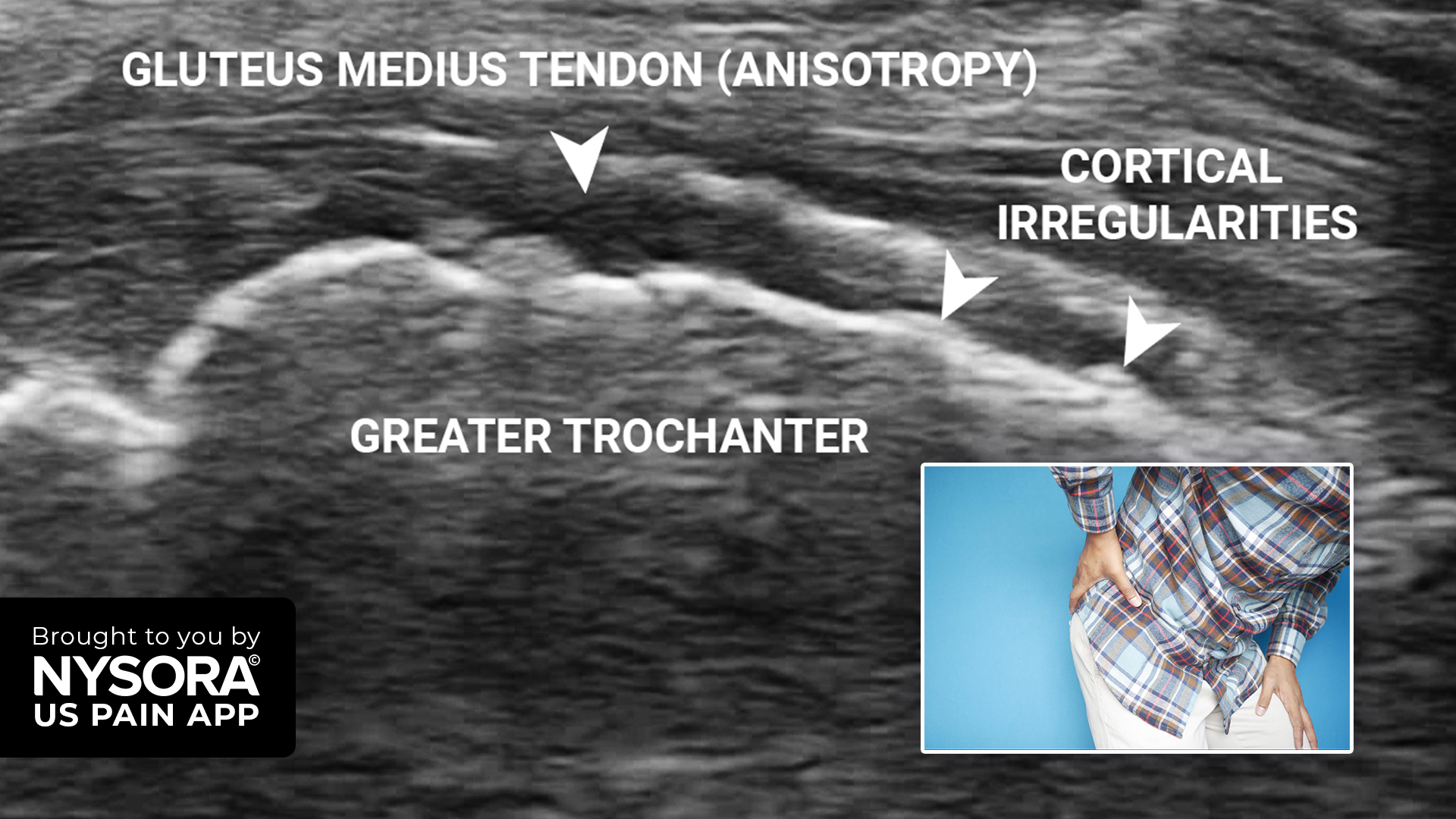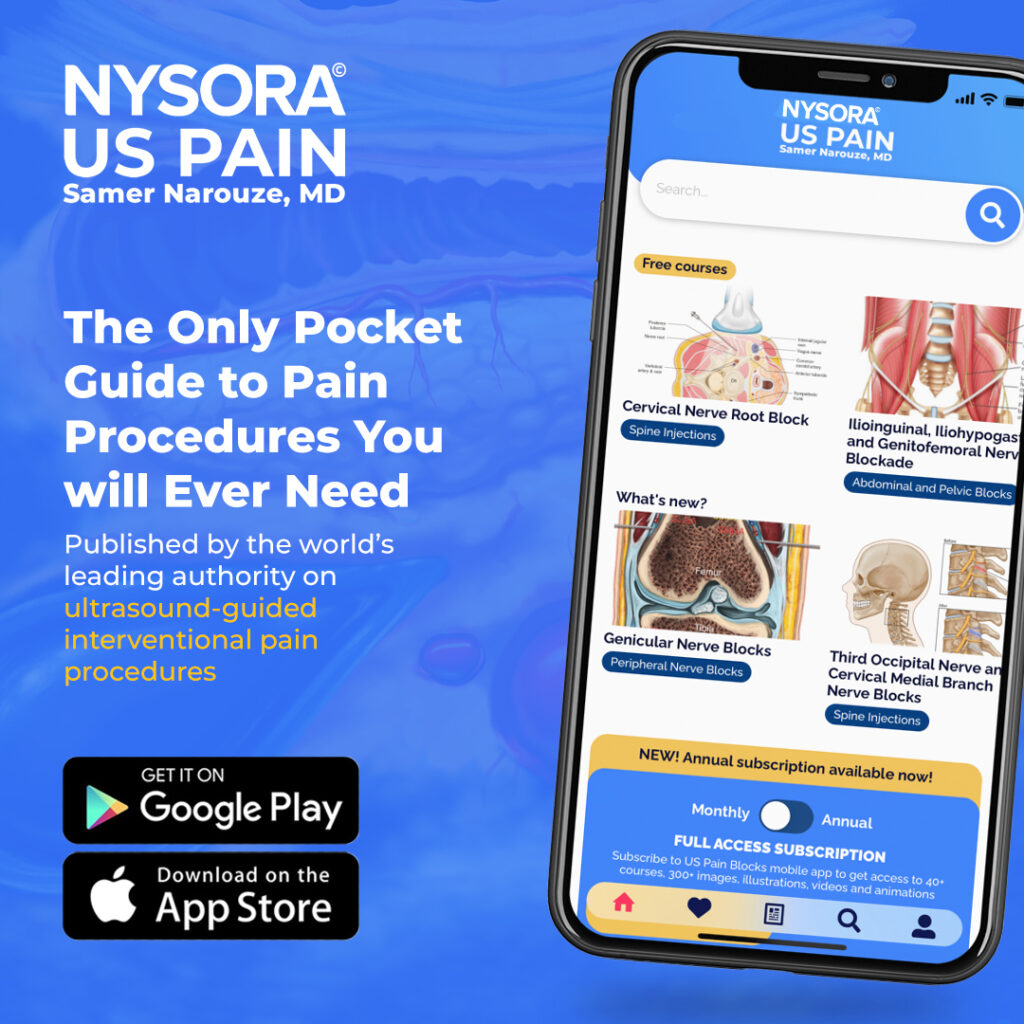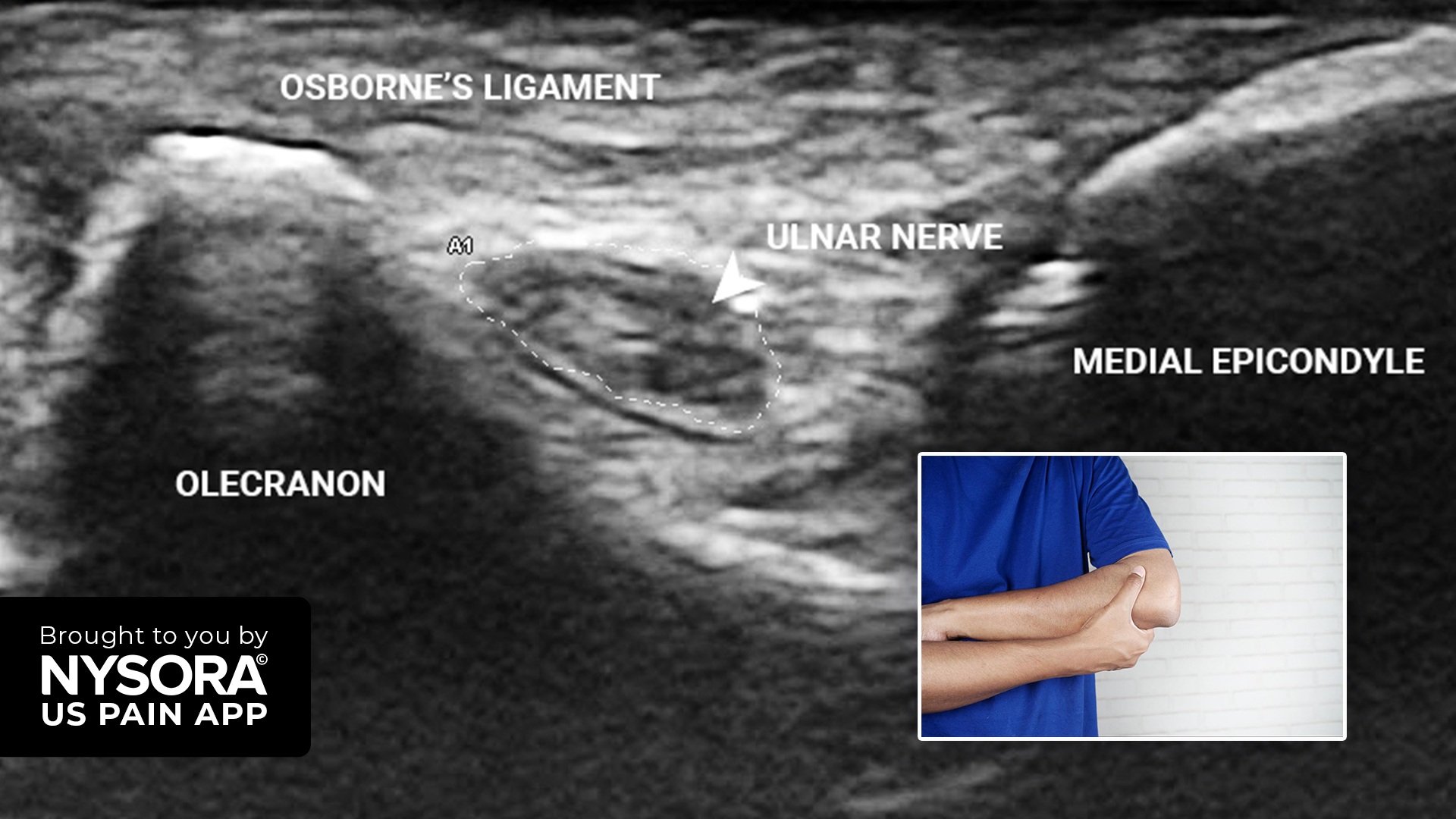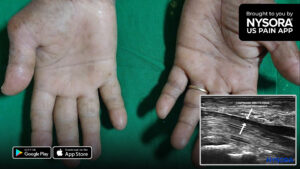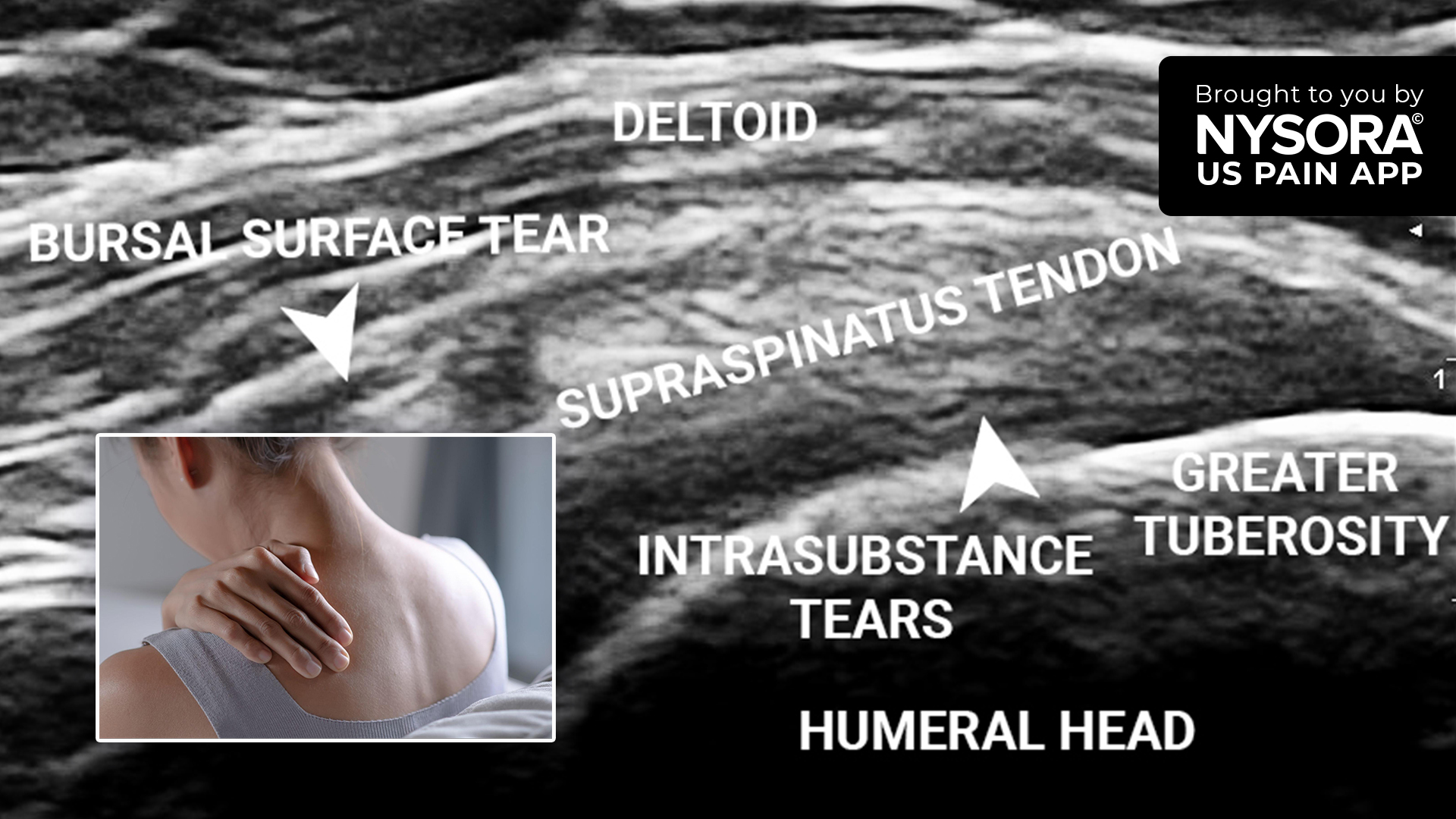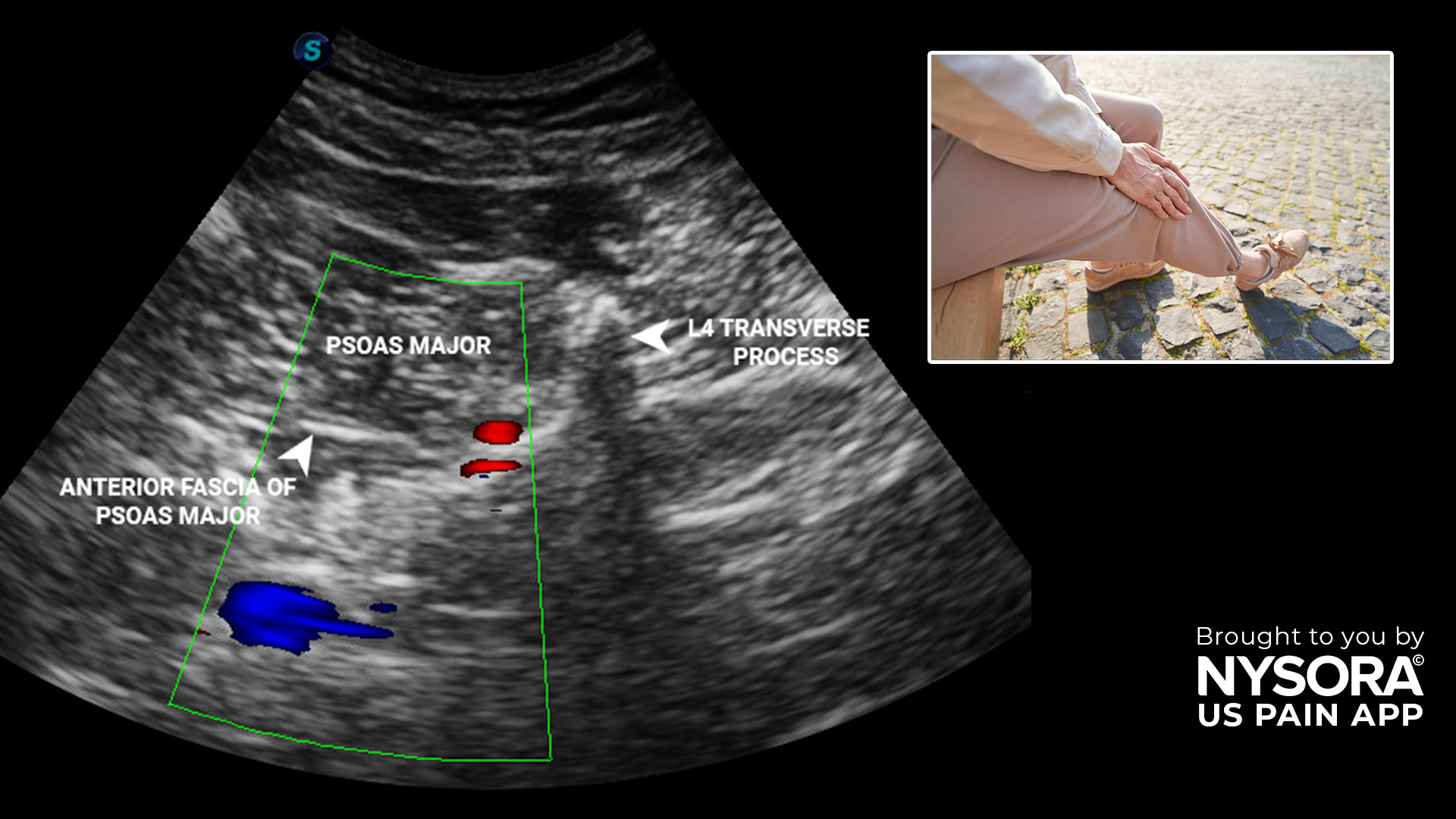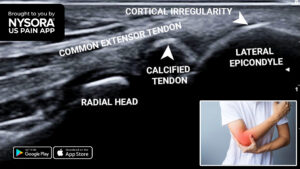A 65-year-old man with diabetes has been suffering left lateral hip pain for six months. He reports no fever and has no history of injury or previous interventions. The patient mentions that the pain intensifies during the night, making it difficult for him to sleep on that side. Moreover, non-steroidal anti-inflammatory drugs (NSAIDs) have been ineffective in alleviating his symptoms.
Physical examination
- Left lateral hip pain
- No back pain
- No radiation or referral of pain
- No aggravating or relieving factors
- Hot fomentation provides relief
Ultrasound findings
MSK ultrasound of the left hip
- Anisotropic gluteus medius tendon

Axial view of the lateral hip revealing an anisotropic gluteus medius tendon.
- Cortical irregularities on the greater trochanter at the insertion site of the gluteus medius tendon
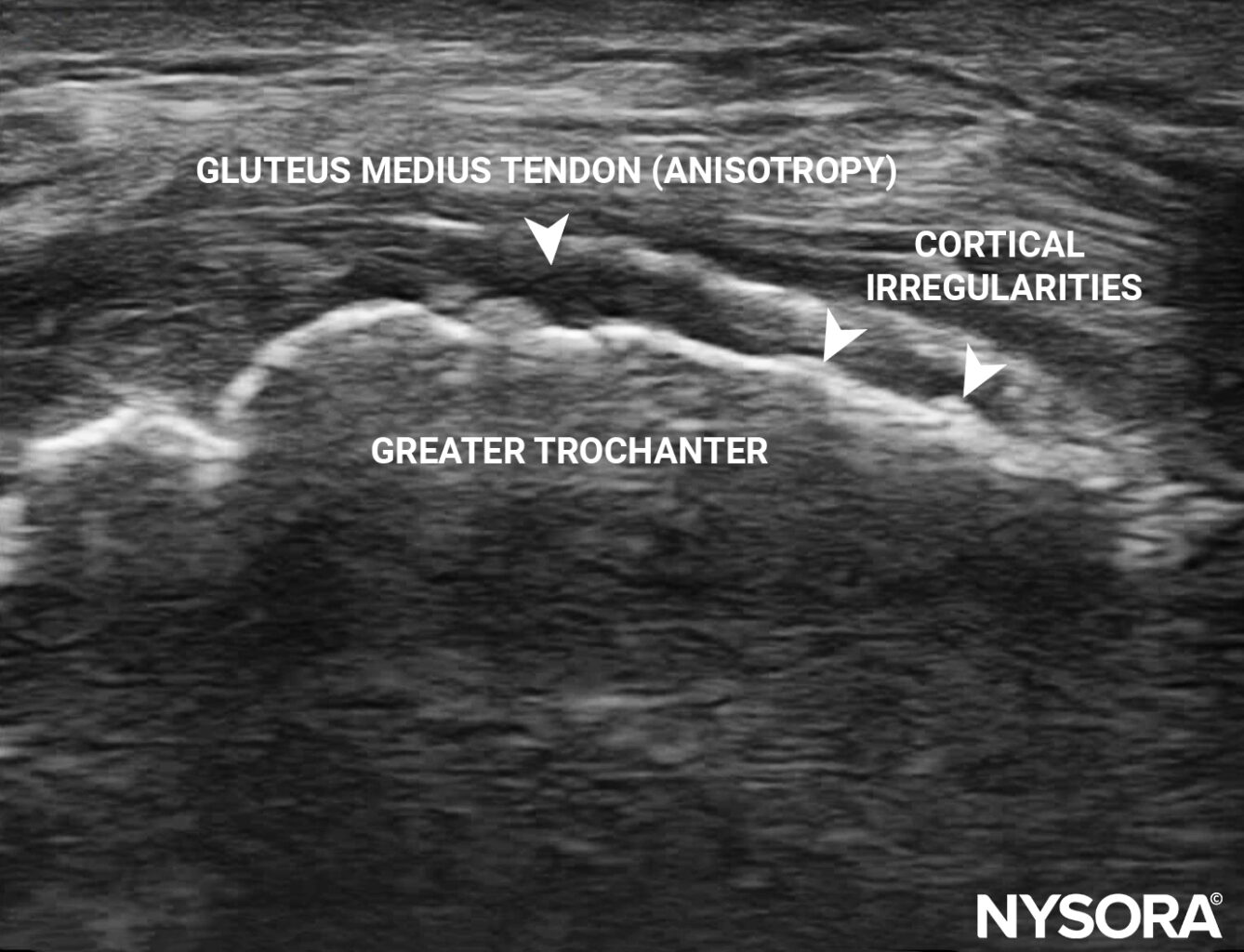
Axial view of the lateral hip. Cortical irregularities are seen at the insertion site of the gluteus medius tendon.
Diagnosis
The patient was diagnosed with greater trochanteric pain syndrome (GTPS) caused by gluteus medius tendinopathy. Previously referred to as trochanteric bursitis, GTPS arises from degenerative alterations in the gluteal tendons and bursa. This condition results in pain along the outer thigh, which is aggravated by activities such as sitting, climbing stairs, engaging in high-impact sports, or lying on the affected side.
Discover more about the treatment strategy, patient outcome, and other unique case studies in the US Pain App. Ready to expand your knowledge? Click HERE and get the ultimate app for chronic pain procedures.
